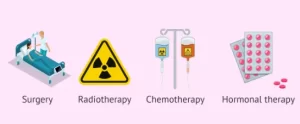As we age, various signs of aging become apparent on our faces, including the temples. The temples on the sides of the forehead can experience volume loss, sagging skin, and deep wrinkles over time.
However, advancements in facial cosmetic surgery offer practical solutions to address these concerns. One such procedure is a temple lift surgery, also known as a temporal lift, which aims to rejuvenate and restore a more youthful appearance to the temporal area.
What Can a Temple Lift Surgery Do?
A temporal lift surgery is a cosmetic procedure designed to address the specific aesthetic concerns associated with the temples. Its primary goals include:
- Volume Restoration: The temples can lose volume with age and appear hollow. A temple lift surgery can restore volume and fullness to this area.
- Sagging Skin Improvement: Loose or sagging skin around the temples can be tightened and lifted through a temporal lift surgery.
- Wrinkle Reduction: Deep wrinkles, lines, and creases on the temples can be smoothed out, resulting in a more youthful appearance.
- Enhanced Facial Symmetry: A temporal lift surgery can improve facial balance and symmetry by addressing volume loss and sagging in the temples.
Different Types of Temple Lift Surgery
Several techniques are available for temporal lift surgery, each tailored to address specific patient needs and desired outcomes. The two main types of temporal lift surgery procedures are:
- Traditional Temple Lift: This method creates discreet incisions within the hairline or behind the ear. Through these incisions, the underlying tissues are repositioned, excess skin is removed, and volume is restored to the temples.
- Endoscopic Temple Lift: In this minimally invasive technique, several small incisions are made within the hairline or temple region. An endoscope, a thin tube with a camera, is inserted through one of these incisions to guide the surgeon in repositioning the tissues, lifting the temples, and restoring volume.
How Is a Temple Lift Surgery Done? Step by Step
- Anesthesia: The procedure begins with the administration of anesthesia. The options include general anesthesia, intravenous sedation, or local anesthesia with sedation, and this choice is typically made during the consultation with the surgeon.
- Incision Placement: Once the patient is comfortable, the surgeon makes the necessary incisions within the hairline or temple region, depending on the technique (traditional or endoscopic).
- Tissue Repositioning and Volume Restoration: The surgeon carefully repositions the underlying tissues, lifts the temples, and restores volume using fat grafting or synthetic fillers.
- Excess Skin Removal: Excess skin is removed if necessary, and the incisions are meticulously closed with sutures or other methods.
- Recovery: The patient is closely monitored during the initial recovery period, and specific instructions are provided to minimize discomfort and promote healing.
Several techniques are available for temple lift surgery
Benefits of Temple Lift Surgery
- Restored Volume: A temple lift surgery can restore volume and fullness to hollow temples, resulting in a more youthful appearance.
- Improved Facial Symmetry: A temple lift surgery can enhance facial balance and symmetry by addressing volume loss and sagging in the temples.
- Smoother Temples: Deep wrinkles, lines, and creases on the temples can be smoothed out, contributing to a more youthful and rejuvenated appearance.
- Youthful Contours: Through tissue repositioning and volume restoration, a temple lift surgery can help achieve more youthful contours in the temporal area.
- Long-lasting Results: While the aging process continues, the results of a temple lift surgery can be long-lasting, providing lasting rejuvenation.
- Customized Approach: Different techniques and approaches allow for a tailored treatment plan that meets individual needs and desired outcomes.
- Improved Self-confidence: A temple lift surgery can improve self-esteem and confidence by addressing visible signs of aging.
- Natural-looking Results: Skilled surgeons aim to achieve natural-looking results, ensuring that the temple area appears rejuvenated yet harmonious with the rest of the face.
- Complementary Procedure: To achieve comprehensive facial rejuvenation, a temporal lift surgery can be combined with other facial rejuvenation procedures, such as a facelift or brow lift.
- Minimal Scarring: The incisions made during temporal lift surgery are strategically placed within the hairline or temple region, resulting in minimal visible scarring.
Risks of Temple Lift Surgery
- Bleeding: As with any surgical procedure, there is a risk of bleeding during or after temporal lift surgery, although it is generally uncommon.
- Infection: Although rare, there is a potential risk of infection after the surgery, which may require additional treatment.
Through a temple lift or temporal lift surgery, patients can enjoy the benefits of smoother temples and reduced wrinkles…
What Age Can Get a Temple Lift Surgery?
Generally, individuals in their 40s to 60s who experience volume loss, sagging skin, or deep wrinkles in the temples are suitable candidates.
What Should You Do Before Temple Lift Surgery?
Before undergoing temple lift surgery, there are several essential steps to follow:
- Consultation
- Medical Evaluation
- Smoking Cessation
- Medication Review
- Follow Preoperative Instructions
It’s important to remember that a temple lift does not stop the natural aging process. After your procedure, gravity, environmental stressors, and other factors will continue to have effects on your skin.wiesman cosmetic
To-Do and Not-to-Do Things After Temple Lift Surgery
Proper postoperative care ensures optimal healing and results following temporal lift surgery. Here are a few essential guidelines:
To-Do:
- Follow Instructions: Adhere to the postoperative instructions provided by your surgeon, including wound care and medication usage.
- Rest and Recovery: Take the recommended time off work and limit physical activity during the initial recovery period.
Not-to-Do:
- Avoid Strenuous Activities: Refrain from strenuous exercises or activities that could strain the surgical area.
- Do Not Touch or Scrub Incisions: Avoid touching, scrubbing, or applying excessive pressure to the incision sites to prevent infection and promote proper healing.
How Much Does Temple Lift Surgery Cost?
On average, a temple lift surgery can range from $3,000 to $10,000. However, consulting with a qualified plastic surgeon is essential to obtain an accurate cost estimate based on your specific needs and desired outcomes.
Summary
temporal lift surgery offers a specialized approach to address the signs of aging in the temporal area. Restoring volume, lifting sagging skin, and reducing wrinkles can rejuvenate the temples and contribute to a youthful appearance.
While it provides numerous benefits, it is essential to understand the potential risks and follow preoperative and postoperative guidelines for a successful outcome. If you are considering temporal lift surgery, consult a qualified plastic surgeon to determine if it is the right option.
Fun fact: Did you know? When people think about facial rejuvenation, the facelift often comes to mind, but the beauty world is much more diverse!
A temple lift, for instance, is a specific procedure that focuses on the temples, whereas a brow lift targets the forehead area. While these surgical procedures offer transformative results, non-invasive options like Botox for wrinkles, dermal fillers for volume, and innovative non-surgical skin tightening techniques exist.
Whether you’re looking into the expertise of plastic surgeons or the magic of cosmetic dermatology, the array of choices to keep us looking youthful is as expansive as it is fascinating.
FAQs
1. How long is the recovery after temple lift surgery? Recovery time varies but typically takes two to three weeks.
2. Will temple lift surgery make me look unnatural? Skilled surgeons can achieve natural-looking results with temple lift surgery.





